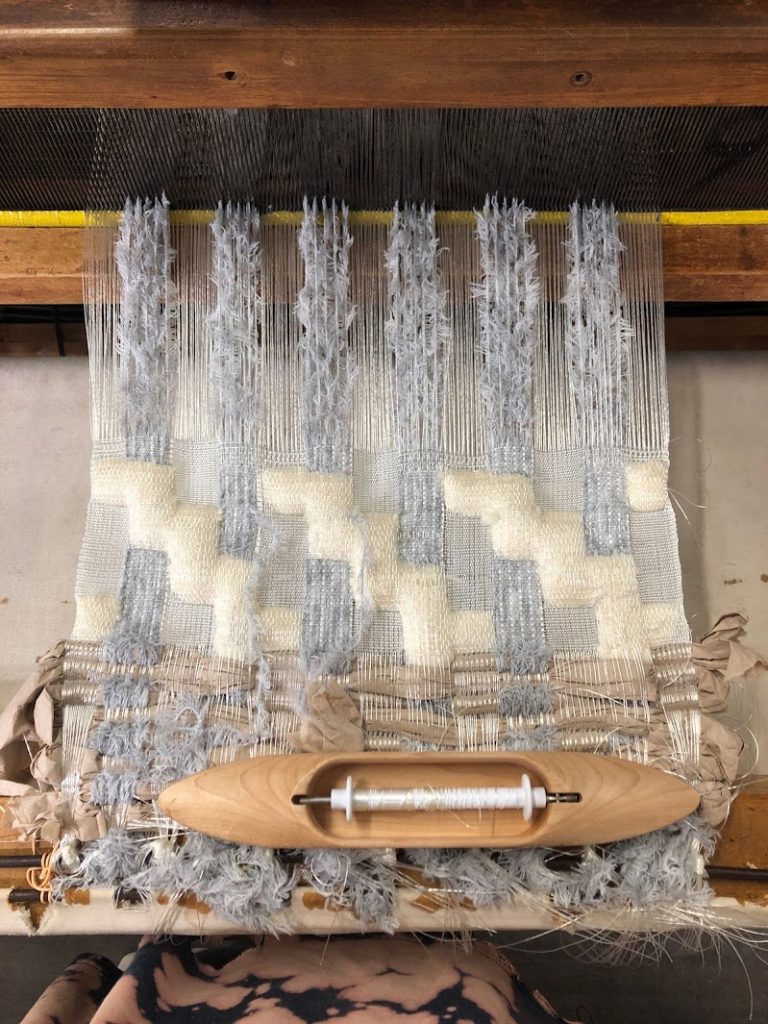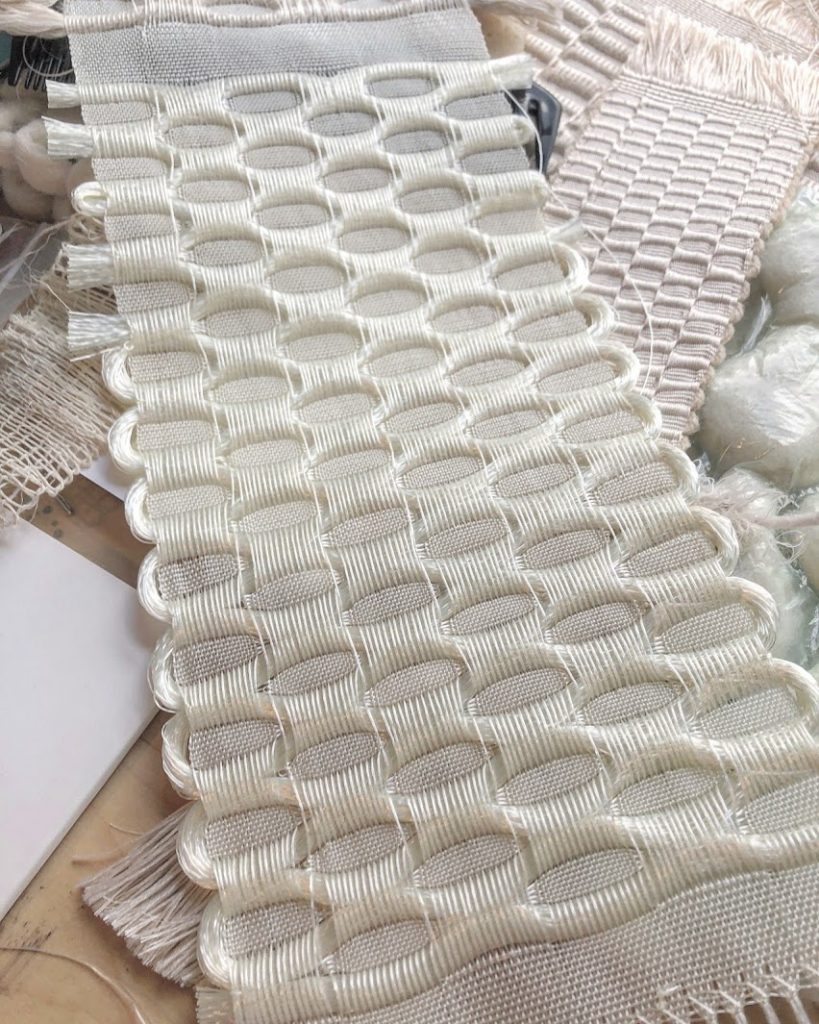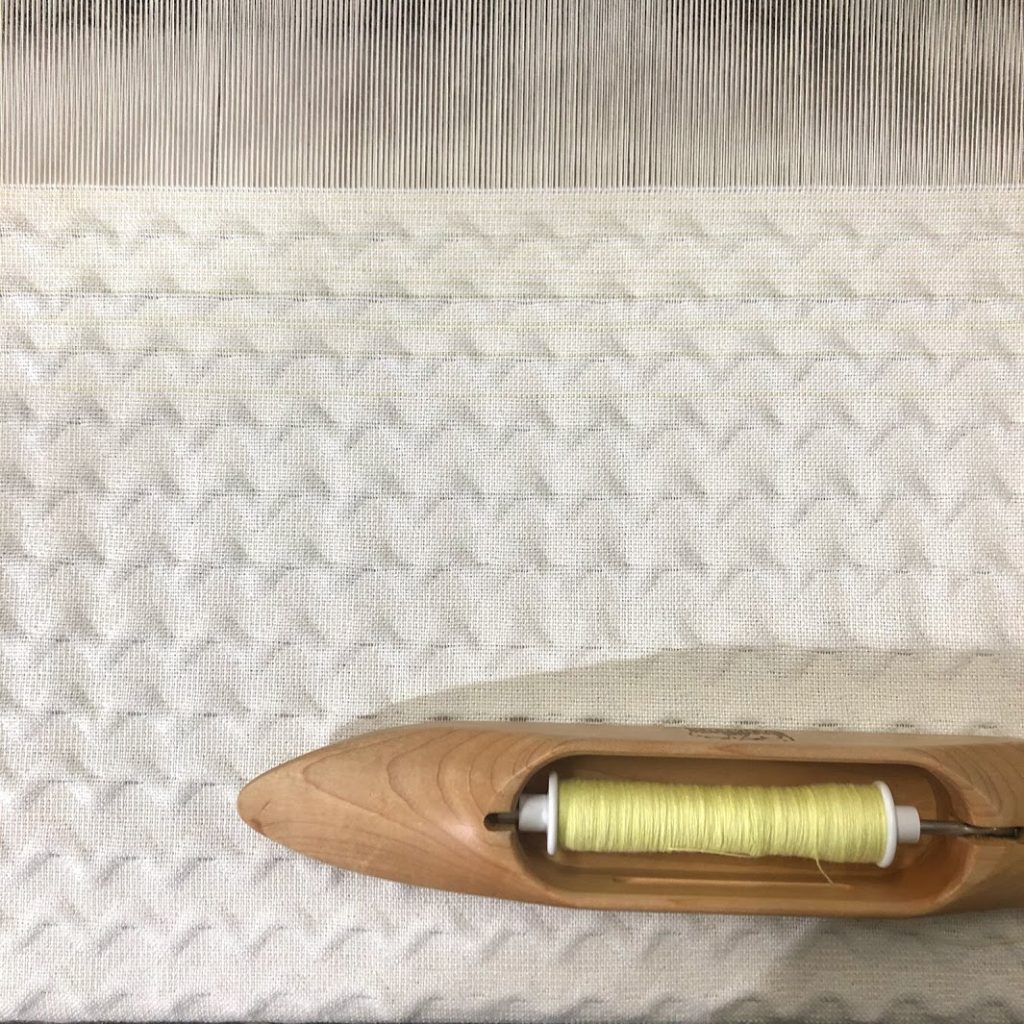Textile Design’s other graduating graduate student is Kristen Tynen. Kristen is also a weaver and her work explores the touch and feel of textiles in one’s environment. She takes a sensitive approach to weave design, thinking mostly about form and texture, and then choosing colors that complement the mood of the fabric. Her background in art lends a flavor of high concept to a functional end-use. In the following interview, Kristen tells us what brought her to this place.

When did you learn to weave and who taught you?
I learned how to weave during a residency in Iceland (www.textilmidstod.is/en). I went for two months with the sole intention of teaching myself how to weave on a floor loom. I worked among a very talented group of textile artists; some were weavers, some were knitters, and others worked with felt. They came from all around the world and were essential to my learning during this time. They shared their knowledge, favorite fibers, different tips and tricks they learned along the way, and even new skills. So, I not only learned how to plan a project, measure a warp, and set up a floor loom, but I also learned how to felt and knit. It was my first real exposure to the textile world and I will always be thankful for the experience.

Do you have a background in design or textiles?
My background is in visual arts and art history. I wanted to be an art conservationist but decided to make art instead. I was drawing, painting, creating sculptures, and working with weird materials. I have always been good at rendering, but I knew I wasn’t going to be an artist. I wanted to find something that was creative and practical and it wasn’t until I discovered weaving that it all clicked for me. I didn’t even know textile design was an option, but I knew I wanted to go back to school for it. I decided to come to Jefferson because I wanted a mix of creative and technical training, which is exactly what I got!
![]()
Who are your design heroes?
I am drawn to interesting processes, so Hella Jongerius comes to mind. I like the way she approaches problems in fields outside her expertise. I love Susie Taylor’s work. Her iterative process is unmatched, in my opinion. Sophie Mallebranche’s metal textiles blow my mind. Ann Richards wrote my favorite book on textiles “Weaving Textiles That Shape Themselves.” All of my predecessors, but namely, Anni Albers, Dorothy Liebes, Sheila Hicks, Reiko Sudo, Maija Isola. I could go on and on….
![]()
What’s the best piece of advice you’ve received from another designer?
Trust your process.

Are there any techniques in textile design you’d like to explore further?
What I sincerely love about weaving is that, even if I wove every day for the rest of my life, there would still be something left for me to learn. Specifically, I would love to keep exploring leno techniques and collapsable weaves. I would like to paint a warp and play around with dyes. I’m dying to learn how to use a TC2 loom. I would love to spend an entire year on one structure. I have an ongoing list of questions about woven cloth that I look forward to answering in my post-graduate life.

What kind of music do you listen to in your headphones?
It depends on what I’m doing, but I’m either listening to a TV show I’ve seen a hundred times, like Gilmore Girls or Schitt’s Creek, or I’m listening to something meditative like ocean sounds or spa music.

How has the pandemic changed your creative routine?
I definitely move a lot slower these days and I spend a lot more time thinking about things. My “workhorse” mentality has also softened a bit because I feel less pressure to constantly be doing anything – moving, making, producing. Instead, I have had more time to reflect and make more thoughtful design choices. I am learning not to rush through things.

What is the most challenging aspect of being a designer?
Being original.

What will you miss the most about Textile Design once you graduate?
I will miss walking by someone’s loom or knitting machine and asking what they’re up to. I will miss running back into the studio to find a different yarn to run on the jacquard. I will miss the equipment and the endless cones of yarn, which were such a luxury. But I will especially miss our incredible faculty and the love and support from my peers. There is such special energy in H005 and I will miss this community terribly.

What advice would you give an incoming student into the Textile Design department?
Don’t be afraid of being wrong. Don’t be afraid of making mistakes. Don’t be afraid of asking questions. Ask every question, ask all of the questions. Don’t doubt yourself. Talk to people outside of the department and try something new. Try everything. Work a little harder than you usually do. Radically accept yourself and your ideas.
What’s next for you?
A very long nap.









Add comment